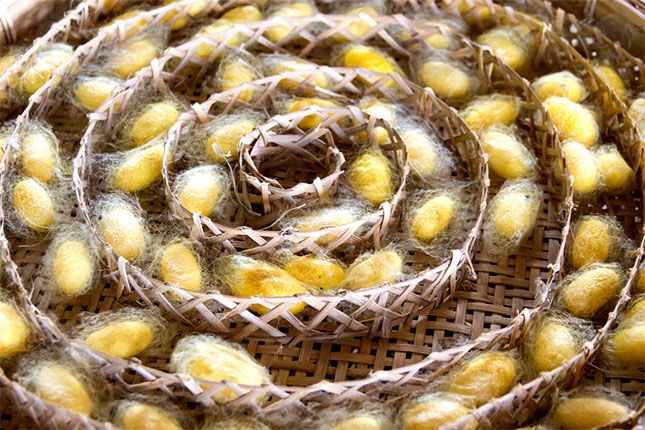Eri, Muga, and Mulberry Silk: What’s the Difference and Why It Matters
- HR NEHHDC
- Jun 10
- 3 min read

India is home to some of the world’s most exquisite and culturally rich silk varieties. Among them, Eri, Muga, and Mulberry silk stand out—not only for their aesthetic qualities but also for the unique processes, geographies, and values they represent. If you're a textile buyer, eco-conscious fashion brand, designer, or artisan, understanding the difference between these silks can help you choose the right fabric for your needs and align with your values.
Let’s break it down.
🌱 1. Eri Silk – The Peaceful Thread (Ahimsa Silk)
Often called the "fabric of peace", Eri silk is unique because it is harvested without killing the silkworm. The moth emerges naturally from the cocoon, making it an Ahimsa or non-violent silk.
Key Characteristics:
Texture: Soft, warm, wool-like texture
Look: Matte finish, natural cream or off-white tone
Origin: Predominantly in Assam and Meghalaya
Use: Ideal for shawls, scarves, stoles, jackets, and sustainable fashion
Eco Aspect: Fully biodegradable, cruelty-free, and sustainable
Eri silk is the only silk that is spun rather than reeled, which gives it its unique texture. It is a favorite among vegan and eco-conscious designers worldwide.
✨ 2. Muga Silk – The Golden Jewel of Assam
Muga silk is exclusive to Assam and is celebrated for its natural golden luster. The name “Muga” itself means yellowish in Assamese. Known for its durability and regal appeal, Muga is often associated with traditional wear and ceremonies in Assam.
Key Characteristics:
Texture: Fine, glossy, and strong
Look: Natural golden-yellow shine
Origin: Exclusive to Assam (wild silkworms Antheraea assamensis)
Use: Sarees, mekhela chadors, wedding garments
Eco Aspect: Natural and organic, but the silkworm is boiled to extract fibers
Muga silk garments are heirloom pieces, often passed down through generations due to their strength and lasting shine.
🕊 3. Mulberry Silk – The Global Favorite
Mulberry silk is the most widely produced silk in the world and is primarily sourced from Bombyx mori silkworms that feed exclusively on mulberry leaves. India is the second-largest producer of Mulberry silk, after China.
Key Characteristics:
Texture: Extremely smooth, luxurious, and fine
Look: Glossy, bright white in raw form
Origin: Karnataka, Tamil Nadu, West Bengal, and Andhra Pradesh
Use: Sarees, dresses, furnishings, lingerie, and high-end fashion
Eco Aspect: Not Ahimsa—traditional reeling involves boiling the cocoon
Mulberry silk is prized in global fashion markets for its elegance and versatility, though its production is not cruelty-free.
💡 Why This Matters for You
Whether you’re a fashion label looking for sustainable alternatives, an artisan seeking premium yarn, or a buyer looking to support indigenous silk traditions—the type of silk you choose reflects your values, story, and end-use needs.
Choose Eri silk if ethics, warmth, and sustainability are your top priorities.
Choose Muga silk if you want luxurious, regal silk rooted in Assamese culture.
Choose Mulberry silk if you need classic sheen and smoothness at scale.
🏭 Where Does NEHHDC’s Eri Silk Spinning Mill Fit In?
Located in Assam, our state-of-the-art Eri Silk Spinning Mill offers ethically sourced, OEKO-TEX® certified Eri yarn to global buyers, designers, and handloom clusters. We’re proud to support the cruelty-free silk movement while preserving the traditions of Northeast India.
Whether you’re building a sustainable fashion brand or designing for impact, our yarn ensures quality, traceability, and peace of mind.
📦 Interested in Sampling Eri Yarn?
Visit www.purbashree.com to explore custom yarn counts, packaging options, and bulk orders. Let's work together to craft a more sustainable textile future.



Comments